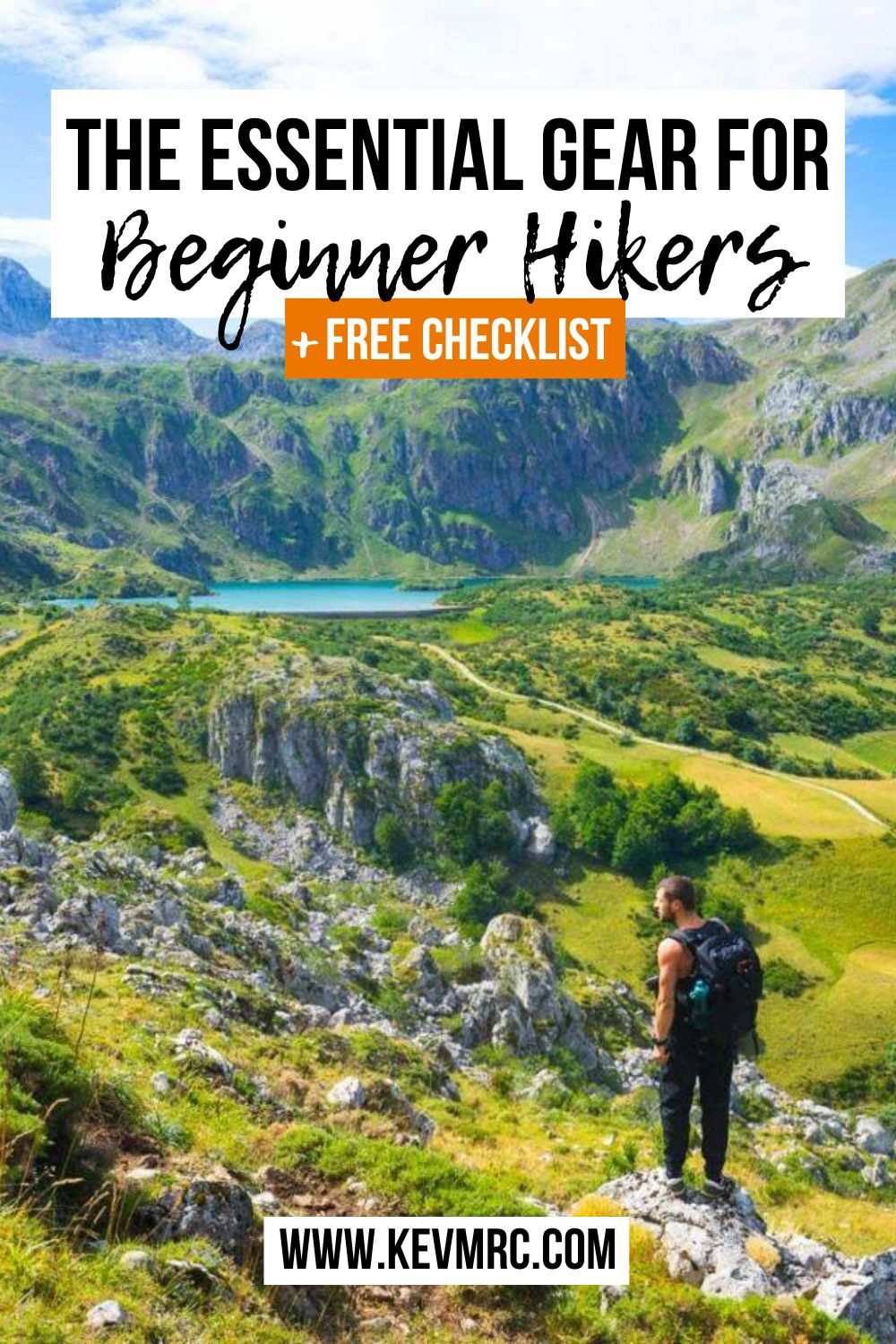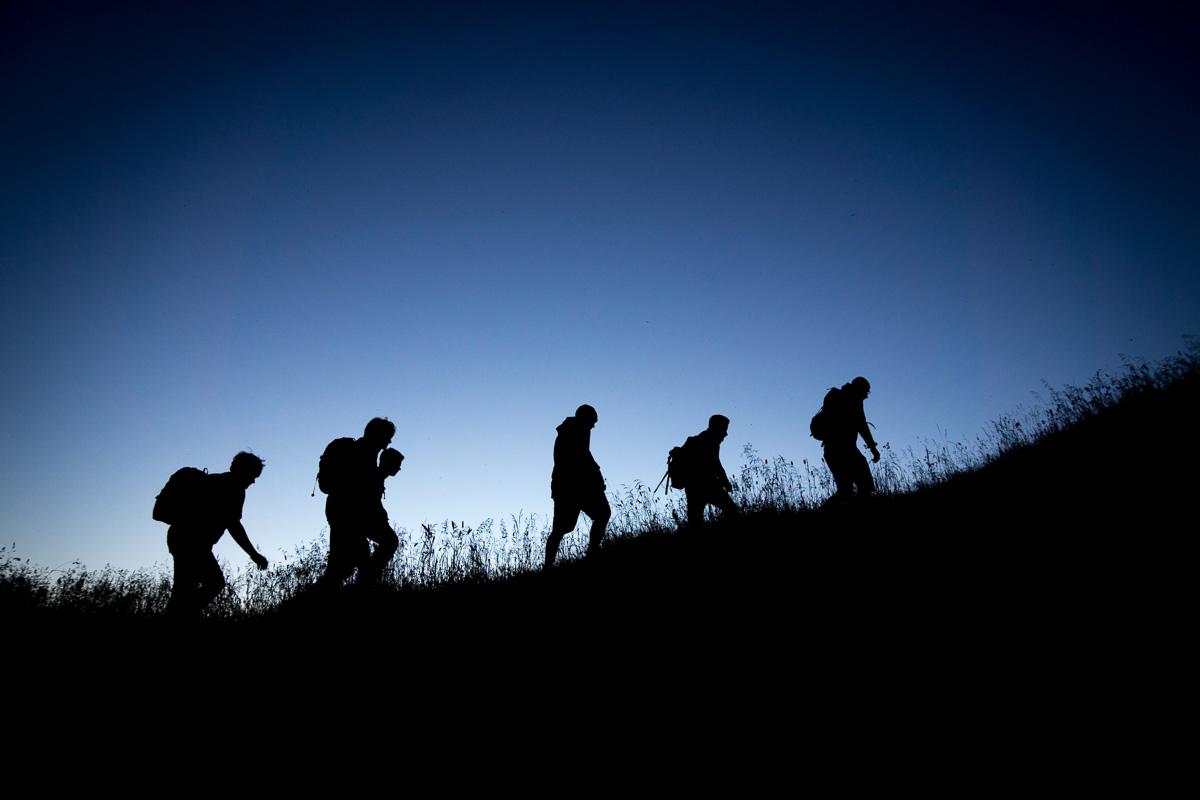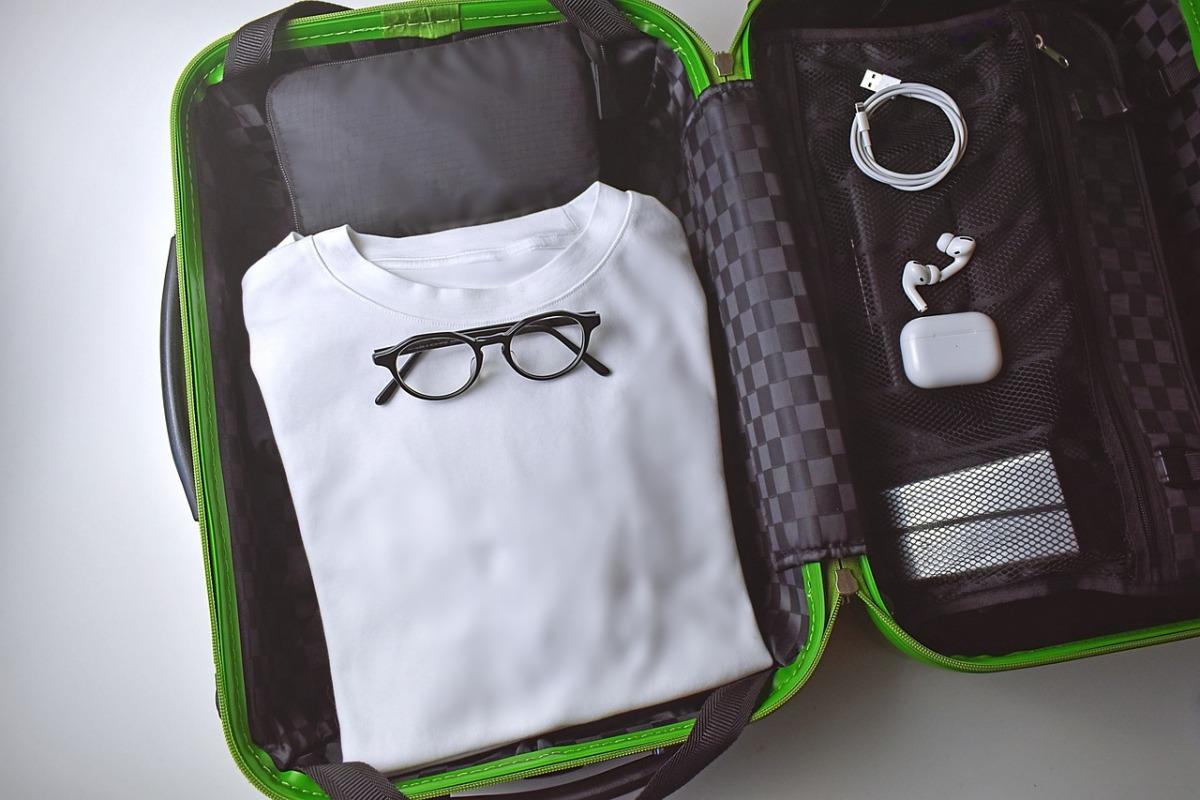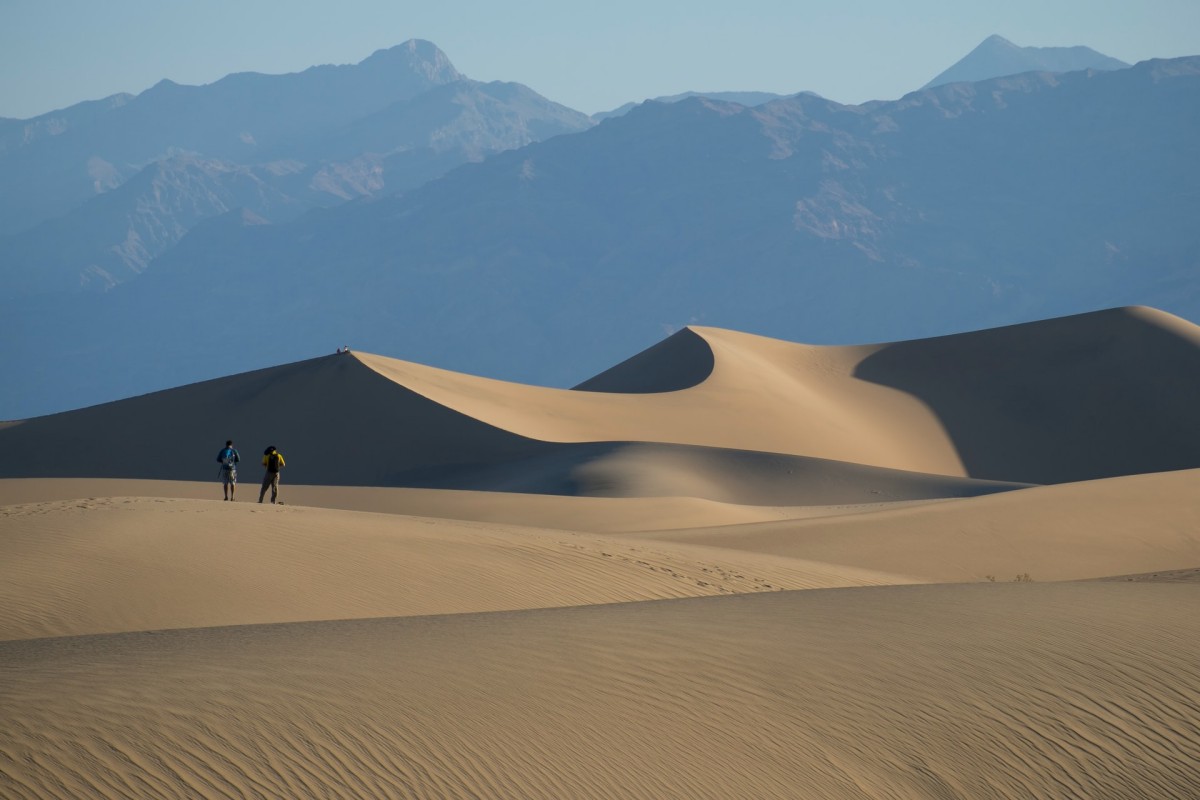The Essential Hiking Gear List for Beginners [Free Checklist]
Hiking is more than just a long walk in the woods; it has numerous advantages. It is mentally stimulating, helps to reduce stress, and keeps you physically fit; it is an excellent way to exercise both the body and the mind. Hiking inspires people to come up with life-changing and creative ideas.
However, as a beginner, don’t be intimidated; it’s completely normal to be unsure of what hiking gear to bring. Before you hit the trail, make sure you have all of the necessary equipment to make your hike comfortable and to prepare you for unforeseen circumstances.
This hiking gear list for beginners is what you need to make your first hike a success!
Ultimate Day Hike Checklist
Here’s a comprehensive beginner hiking gear list of what to bring on a hike to be self-sufficient, with more items than you will probably need for short hikes in or around developed areas, but you can tailor it to your needs for these hikes.
Hiking Gear:
| First Aid Items:
| Food:
| Navigation:
|
Clothing (adapt on season):
| Sanitary Ware:
| Extra Hiking Gear:
| Personal Items:
|
Click on the button below to get this hiking gear checklist on your phone and start packing easily! Create a copy of the document to use it.
Keep reading below if you need info + tips about the hiking gear basics for beginners and/or if you need item recommendations 👇
Essential Hiking Equipment Review
This focus on the hiking essentials for beginners will explain why you need to pack these items, with recommendations so you can have the best gear with you.
1. Good Hiking Shoes 🥾
Because you’ll be doing a lot of walking, your most important hiking assets are your feet, and your hiking shoes are your most important gear. Some hikers (read: experienced hikers) walk in sneakers, which, while not entirely bad, aren’t ideal for beginners, especially if you’re going on a steep hike.
Ultimately, the shoes you wear will be determined by your preferences and the terrain on which you intend to hike. However, it is essential to buy the proper hiking shoes.
Look for a lightweight, sturdy shoe that fits perfectly in your heels has enough traction, and is loose enough at the toe to not constrict you when you wear socks.
- Waterproof Hiking Shoes: Whether you are hitting the trails or looking for a solid work shoe, these...
- A Better Way Down: Designed with Descent Control Technology, the X Ultra 3 GORE-TEX hiking shoe...
- Adventure Awaits: Whether you love a local day hike or hitting the trails for a multi-day adventure,...
2. Comfortable Hiking Clothes 👕
Every beginner hiker gear starts with comfortable clothes. Never make the mistake of backpacking in jeans or cotton. Jean’s chaff and gets soggy and heavy when wet. Cotton is generally bad hiking clothing because it doesn’t dry when wet.
Instead, wear quick-drying, lightweight, durable sports clothes that are specially made for active outdoor use. It’s okay to go hiking in short sleeves if you’re not going in the cold, but always have a rain jacket.
However, if you’re going hiking in the winter or in the cold, you should make sure to wear layered clothing and a waterproof jacket. They keep you warm, and you can easily pull them off when you get too warm. The weather can change at any time, so even if you’re going hiking in warm weather, bring extra clothing.
Here’s the cloth I always have with me when I go hiking, no matter what:
- 100% Polyester
- Full-zip mockneck
- Long sleeve
3. Reusable Water Bottle 💦
The most important thing you should bring on your hike is plenty of water. This cannot be overstated. One of the most common issues that new hikers face is dehydration.
However, as a beginner, it can be difficult to determine how much water you will require for your hike. It can be more, but as a general rule, bring at least 0.5 liters of water for every hour you intend to hike.
Instead of bottled water, get a couple of good water bottles for hiking, preferably ones that can fit into backpack pouches so you don’t have to hold them in your hands, and fill them up with water. Bottled water isn’t exactly environmentally friendly, and it’s bound to become warm and unpleasant after a while. You should also have water treatment on hand so that you can treat any clean water that comes your way if you run out.
- TempShield insulation keeps beverages cold up to 24 hours and hot up to 12 hours
- Made with 18/8 pro-grade stainless steel to ensure durability, pure taste and no flavor transfer
- Flex Cap is leakproof when closed, to transport without worry
4. Hiking hats and sun protection 🕶
Wearing sunscreen is essential for any hiking trip, even in the winter. If adequate precautions are not taken to protect oneself from the sun, the consequences of sunburn, chapped lips, and chafed skin may cause you to cancel your subsequent hiking trip.
Wear polarized sunglasses and hiking hats, apply plenty of sunscreen before beginning the hike, always remember to bring extra, and, if possible, wear a hoodie.
Use lip balm, preferably one with SPF, and remember to apply it. If you’re a woman, consider purchasing a hiking hat made specifically for women to protect you from the sun.
- Face sunscreen for oily skin with broad spectrum SPF 60 protection; Sunscreen absorbs pore clogging...
- This daily face sunscreen provides advanced protection while absorbing pore-clogging oil. Our best...
- Non-comedogenic sunscreen for sensitive skin provides broad spectrum protection. Oil-free sunscreen...
5. Backpack 🎒
This is the ultimate basic hiking equipment. Whether you’re going on a short or long hike, your hiking backpack will, to a large extent, determine how successful your hike will be.
A good hiking backpack should be lightweight, strong, made of breathable material, large enough to hold everything you need on your walk, and should grant you easy access to your hydration bladder or water bottles.
From the material to the strap length, the size, compartments, and fitness, it is very important that you pick the right backpack. If you’re a woman, we suggest that you use a backpack made specifically for women rather than one made for men. Women’s backpacks are designed to rest on a different part of the back, so they would therefore be more comfortable for you.
The recommended daypack below is available in small and large; the small version is perfectly suitable for women.
- Internal padded laptop sleeve
- Dual zippered hipbelt pockets
- Blinkie light attachment
6. Trekking Poles🚶
Every type of hiker, even novices and experts, can benefit from using trekking poles or hiking sticks. They are beneficial for a number of reasons, including relieving pressure and tension on the joints; aiding in balance, particularly over rocky or uneven terrain; making excellent splints in the event of accidents, and serving as a deterrent to wild animals.
As a beginner, you should invest in a solid pair of trekking poles that are adjustable, have a good grip, and have replaceable carbide tips. Three materials can be used to make trekking poles: carbon fiber, aluminum, or the heaviest option, wood.
Although somewhat heavier than carbon fiber poles, aluminum poles are more durable and less expensive. On the other hand, carbon fiber poles are the most shock-absorbing yet are prone to breaking under pressure. Choose a trekking pole based on your needs.
- Built to Last: Made of 3k 100% Carbon Fiber, each pole weighs only 7.6 oz allowing you to keep your...
- Added Comfort: We use moisture-wicking ergonomic cork grips that conform to your hand shape for the...
- Premium Stability: With our flip lock lever technology, our hiking poles are easy to adjust & lock...
7. A Headlamp or Torchlight 🔦
One of the most dangerous hiking mistakes you can make is going without a light source. Headlamps or torchlights, whether battery-powered or high-powered, are required, especially if you plan to stay until the sun goes down.
Never play with your torch; without one, you won’t be able to see when it gets dark, and getting lost in the dark is no laughing matter. Bring a torch even if you only intend to hike for a few hours, because you never know what might happen.
If you plan to spend the night or hike at night, bring a sleeping bag, insect repellent, and a fire starter (or another source of ignition). Keep extra batteries on hand if your torch is battery-powered.
- Power: 300 lumens (ansi-fl1 standard)
8. First Aid Kit ⛑
Many people fail to pack first aid kits for their hiking trips until they need them. For obvious reasons, a first aid kit should be one of the first items in your hiking backpack, even if you’re hiking with a partner. Don’t wait until you get hurt on your hiking trip to realize you should have brought one.
What should your first-aid kit contain? A first aid manual, antiseptic and antibiotic creams, adhesive bandages for twisted or sprained ankles, duct tape, sunscreen, vinyl gloves, pain relievers, a whistle, surgical scissors, or tweezers, and a survival bag are among the items included.
If you can get a full first aid kit, that’s even better; if not, just get one with all of the listed essentials. A good first aid kit should be portable and waterproof.
- Compact Convenience: This compact first aid kit is designed for multi-sport athletes, whether you're...
- Two-Stage Durability: The waterproof medical kit stays dry with a DryFlex inner bag and...
- Ultralight Build: Weighing under 4 oz, this lightweight medical kit is ideal for minimizing pack...
9. Food 🍌
Whether you’re going on a short, 2-hour trip or a weekend hike, packing the best food for a hike will help you feel inspired to tackle any path.
As a beginner hiker, you should be less concerned with nutrition and more concerned with packing high-energy snacks that you can eat on the trail and will not crush in your backpacks, such as peanut butter, energy bars, and a few bagels and sandwiches. Consuming 100-200 calories of snacks per hour will keep you going while preserving your snacks.
Also, bring some extra snacks in case you are out longer than expected. If you’re going on a long hike, we recommend bringing extra high-calorie foods that will keep you going without bloating you up, such as dried fruits, bananas, and beef jerky.
- WHOLESOME INGREDIENTS: CLIF BAR Energy Bars are non-GMO and made with plant-based ingredients like...
- SUSTAINED ENERGY: CLIF BAR is The Ultimate Energy Bar, purposefully crafted with a mix of protein,...
- INDULGENT BROWNIE FLAVOR: Deliciously made for the taste of freshly baked chocolate brownies ready...
10. Toilet Paper or Zip-top Plastic Bag 🧻
Nobody knows when nature will call, and everyone has to pee at some point while hiking. You might even need to use the restroom. Don’t worry.
If you need to pee, simply find a convenient location away from the trail and at least 200–250 feet from any water source and pee. If you’re a woman, you can dry up with some toilet paper, put it in a plastic bag, and dispose of it properly when you get home. (Never leave a trace.)
If you need to use the restroom, try to find a spot well off the trail and do your business. The best is to have a small trowel to dig a whole. If you’ve run out of toilet paper, you can clean up with large leaves.
- First, save yourself a ton of time and use the Deuce UPSIDE-DOWN to probe the top 3-4” for rocks...
- Three models; #1 is the lightest at .45oz (the weight of just 2 1/2 teaspoon of water) for only the...
- Made in the US and S. Korea of aerospace grade, US-produced 7075-T6 aluminum that meets the AMS4045...
11. GPS Device 📍
You should invest in a good hiking GPS; these devices work anywhere and never run out of battery power. This is critical because it will help the search and rescue team find you if you get lost along the way.
A hiking GPS, in addition to being durable and having built-in maps, also provides barometric altimeter readings and is useful for backtracking. However, as you gain experience and become acquainted with some of your favorite hiking trails, you may find that you no longer require one.
If you have a GPS-enabled smartphone, bring it with you. However, it cannot be used in place of a hiking GPS because smartphones are not always reliable in the backcountry. It can, however, be useful, at least for the flashlight. Just make sure to keep it in a protective case.
- Large 3 inch Sunlight-readable color display for easy viewing
- Trigger an interactive SOS to the geos 24/7 search and rescue monitoring center, two-way messaging...
- Preloaded Garmin TOPO mapping with direct-to-device Birdseye satellite imagery downloads (no annual...
12. Microspikes 🏔
If you plan to hike in the winter, the first item on your list should be a microspike, followed by water and your hiking gear.
Microspikes, also known as ice cleats or trail crampons, are traction devices made up of chains and cleats attached to rubber holders that are worn over shoes or boots when hiking, running, or walking on ice, snow, or any other slippery surface. They’re essentially snow chains for your hiking boots.
Hiking in the winter is dangerous and necessitates additional traction that regular hiking shoes cannot provide. Some microspikes have longer and/or sharper cleats than others, so pick a pair that fits your needs. The best microspikes for hiking have at least twelve 1.5-inch-long cleats, are tough, and can withstand the harshest winter conditions.
- BEST FOR: Winter hiking, backpacking, ice-trekking, ice fishing and trail-running. The MICROspikes...
- SPIKE DESIGN: 12 heat-treated stainless-steel corrosion resistant spikes per foot. 8 spikes at the...
- ELASTOMER HARNESS & REINFORCED EYELETS: Using a patented eyelet design, tough TPU inserts reinforce...
13. Topographic Map 🗺
Get a topographic map of the area you intend to hike in and take your time getting acquainted with your planned route before embarking on your journey. This has the potential to change your life.
An ideal topographic hiking map contains detailed information about the topography of the area as well as all of the geographical features present.
As a beginner, studying topographic maps ahead of time and keeping them handy on your trip gives you a better understanding of the terrain and what to expect along the trail. You are aware of both safe and dangerous routes. However, if you’re new to using maps, it’s important not to stray too far on your first few hikes, especially if you’re unfamiliar with the area.
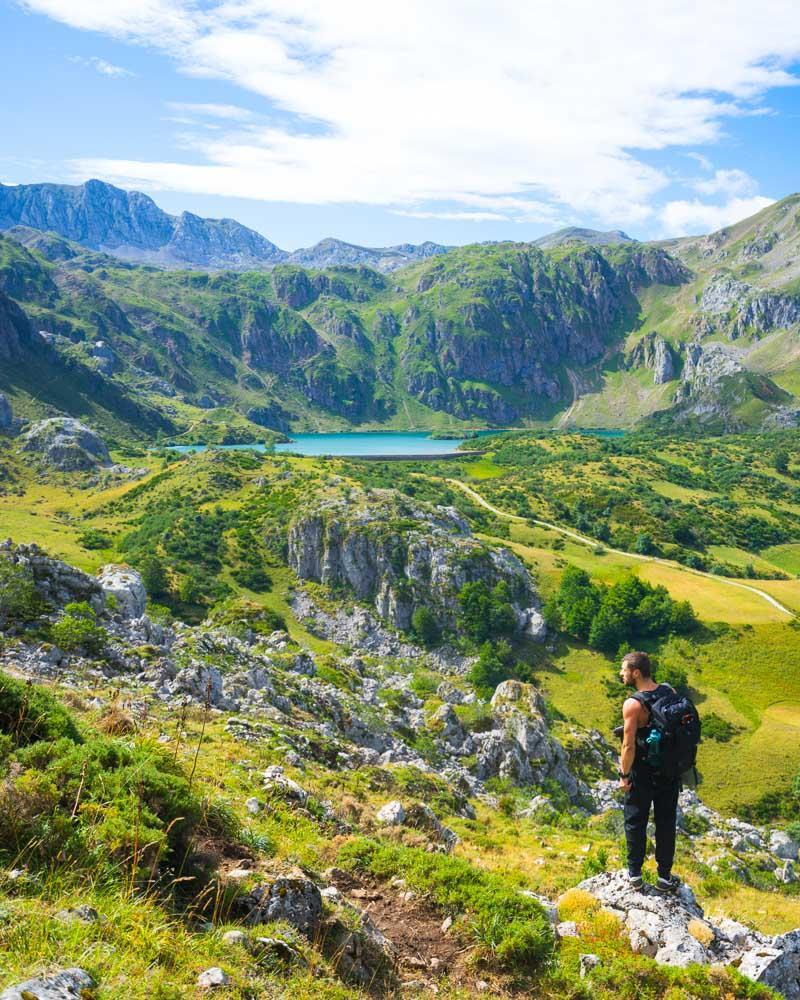
FAQ About the Hiking Gear Essentials to Bring
What are the essential items for hiking I absolutely need to pack?
As a beginner, you are not going to go on long hikes, so you won’t need to bring all these 45 hiking gear on the checklist. To get started, you only need the essential hiking equipment, so packing will be quite easy. Make sure to have these 10 items before you go:
- Water, food & snacks
- First-aid kit
- Navigation tools (paper + digital map, GPS)
- Power bank to charge your devices
- Tissues
- Fire starter
- Swiss army knife
- Headlamp or flashlight
- Duct tape in case anything your gear breaks or rips
- Your wallet + money (both cash & credit cards)
This is the minimal hiking starter pack, you will be ready for a good day hike in the backcountry with this gear.
What should I wear for hiking?
Before I tell you what to wear, I’ll explain how you should dress. Because yes, there is a technique to dress well for a hike: layering. The idea is to have a basic t-shirt (your under layer) and a second intermediate layer, or even a third layer in order to better control your body temperature and adapt to the weather as you go along.
Indeed, once you start walking, you will warm up, and can then remove the middle layer. If you start to get cold as you go up in altitude, you can then put on your top layer.
As for the ideal clothing for layering, I recommend wearing a t-shirt (first layer), a sweater or a fleece (second layer), and a waterproof jacket (third layer). For the bottom, waterproof or water-repellent breathable pants/shorts will do the job. Of course, adapt your outfit to the weather.
What not to bring with me on a hike?
Avoid wearing heavy clothes such as jeans as they won’t dry quickly in case of rain. Also, don’t overpack: bring only what is useful to you so you will be able to keep hiking comfortably at your own pace without hurting your back, with less effort to make.
And of course, don’t bring anything valuable to you such as jewelries.
Any tips for a first day hike?
Here are 4 tips to know or do before heading on your first hike:
- Start slow: you don’t have to climb Everest on your first hike! Start by hiking a small trail in your area, perfect for getting used to walking. This will also allow you to break in your new hiking shoes before tackling a longer hike.
- Check the weather forecast before you leave: knowing the forecast will help you know what to wear and what to pack. If the weather is stormy, you can reschedule the hike instead of being surprised by showers on the trail.
- Prefer going with a partner: although hiking alone can be great for many reasons, when you’re new to hiking, it’s best to go with a partner. Beyond safety and mutual support, your hiking buddy will also be an excellent source of motivation.
- Leave no trace on the way: in order to respect nature at best, make sure to use the marked trails as much as possible. Don’t pick up anything, and take all your trash with you.
Final Thoughts on the Best Hiking Gear for Beginners
In short, filling your daypack will require you to think about the main aspects of the trekker’s life: health, hygiene, clothes, food, hydration, and of course pleasure.
Some items are essential, like sun cream, cereal bars, water… As for the rest, you have to understand the environment in which you are going, and know yourself well: if you are allergic to bee stings, for example, you would be well advised not to forget your antihistamine!
Before you go, here are further readings that might be useful for your next backpacking trip:
About the Author
Catalin Geangos is the Founder and Editor of TravelTrained. He has been to more than 35 countries and lived in a few more before. Now is making a living as a digital nomad by reviewing travel gear and writing guides about the destinations he has visited. You can follow him on Instagram, Facebook, and Pinterest.
—
Was this backpacking gear list useful to you? Then share this post using the button below to find it later & help fellow hikers find the best hiking equipment for beginners! They will love you for it 🙂
Pin this to Pinterest!
Enjoyed this guide? Then help a fellow traveler and pin it! They'll most definitely love you for it, 100% guarantee.












